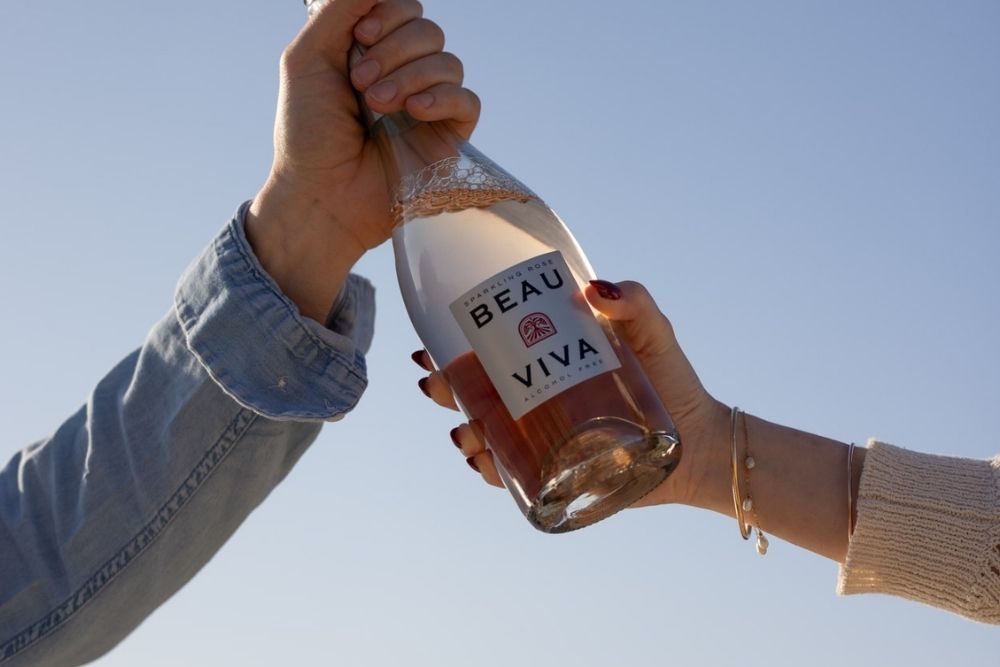
How Is Champagne Made Without Alcohol ?
Champagne. Can you name another drink that’s more synonymous with celebration? From weddings to Wednesday night game nights, every party, no matter how big or small, benefits from a glass of bubbly.
But while champagne or its similarly bubbled counterparts make for great additions to every get-together, alcohol doesn’t always need to be invited to the party.
How do you make Champagne without alcohol? Let’s talk about non-alcoholic Champagne, what it is, and how to find the best non-alcoholic sparkling wine.
We’re going to get a little nit-picky here, and by that, we mean we’re going to follow the law. Technically speaking, there cannot be a Champagne without alcohol. You might be thinking, “Wait a minute—I know I’ve seen alcohol-free sparkling wine.” And you’d be correct. But while all Champagne is sparkling wine, not all sparkling wine is Champagne.
You might have heard that, in order for a sparkling wine to be called a Champagne, it has to come from the Champagne region of France. But that just scratches the surface of the long list of regulations a winemaker needs to adhere to in order to make Champagne.
To make Champagne, a winemaker needs to follow the Méthode Champenoise. Originating in the Champagne region of France, this process uses a secondary fermentation. The first fermentation creates still, dry wine that’s used as the base. Then, the secondary fermentation sees the winemaker add a mixture of sugar and yeast called liqueur de tirage. After the first fermentation process, the Champagne-to-be will already have an ABV of about 9%. After the second fermentation, that ABV jumps to 12%.
Other regulations include that there are only seven types of grape varieties that can be used for Champagne and that there’s a minimum storage period of 15 months before the Champagne can be released.
If you see anything calling itself a Champagne that does not follow this production method and these additional regulations, it’s technically mislabeled. And because most winemakers take these rules seriously, you’ll often just see “sparkling wine” on a label instead, even if what’s in the bottle does resemble a Champagne.
These sparkling wines can follow various methods for dealcoholization. For instance, BEAU VIVA’s zero-alcohol sparkling wine, which is a rosé-style wine, uses the vacuum distillation method. This method starts with the wine being placed in a vacuum chamber. Then, the pressure decreases, making the boiling point of alcohol drop significantly. Because of this decrease, the alcohol evaporates at much lower temperatures, which helps the wine retain its flavor while being dealcoholized, preserving all of its delicate flavors and aromas.
Why Drink Champagne Without Alcohol
You May Spare Yourself a Headache or Two
Champagne headaches are a common complaint after downing a glass of the bubbly stuff. That’s mainly due to the high alcohol volume. When you choose alcohol-filled Champagne, you’re drinking an ABV of about 12%. But when you choose a sparkling wine that’s listed as non-alcoholic, it needs to have an ABV of only 0.5% or less. BEAU VIVA is one of the few types of sparkling wine that has a true 0% ABV, meaning it’s fully alcohol-free.
You Celebrate the Moment By Staying in the Moment
Even when alcohol is an invited guest to the party, it has a habit of overstaying its welcome and making the whole thing about itself. Too often, alcohol can seem like the star of the show, with many people at the party focusing more on it than on the people they’re here to celebrate. Going with a non-alcoholic sparkling wine instead of fully alcoholized Champagne means putting the focus less on alcohol and more on the ones you love. You’ll truly be in the moment with them, enjoying the party without alcohol stealing the show.
Everyone Can Partake
Many of us can remember a time when we were not allowed to partake in Champagne. Maybe it was for a cousin’s wedding, and you can recall being just shy of the legal drinking age. And if you were told to just toast with water, you may have accidentally cursed the happy couple.
Or perhaps at your own high school graduation, you couldn’t help but be a little annoyed that you, the person being celebrated, couldn’t actually enjoy a glass of Champagne.
Alcohol can be exclusionary. While no one under the age of 21 in the United States is allowed to partake in drinking alcohol, people of all ages don’t drink for various reasons. Toasting with non-alcoholic sparkling wine instead of Champagne means creating a gathering that’s more inclusive and welcoming.
Toast to a Sparkling Wine Like No Other
You might not be able to find a (real) Champagne without alcohol, but thankfully, you can still get a non-alcoholic sparkling wine that’s just right for your celebration. BEAU VIVA’s zero-alcohol sparkling rosé never steals your spotlight but rather serves as the perfect accompaniment to your enchanted evening. With ripe, fresh red fruit flavor with a delightful shock of citrus, it’s not a Champagne, but it’s not trying to be one, either. Instead, it’s something even more special, something that lets you celebrate your way and with every person you love.
Try something new with BEAU VIVA.
